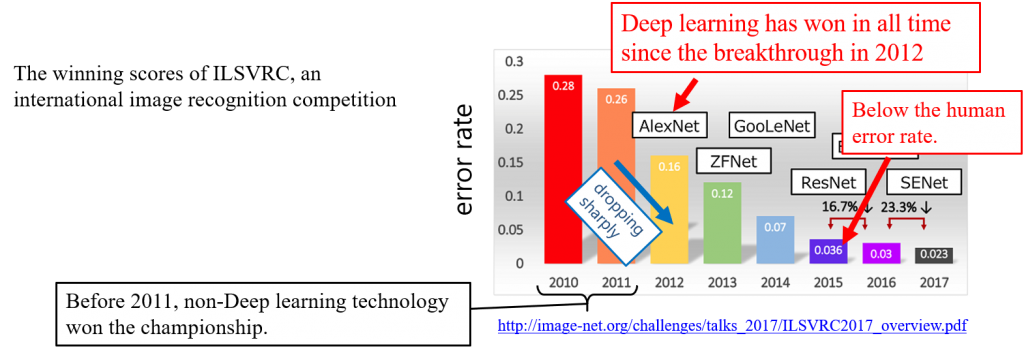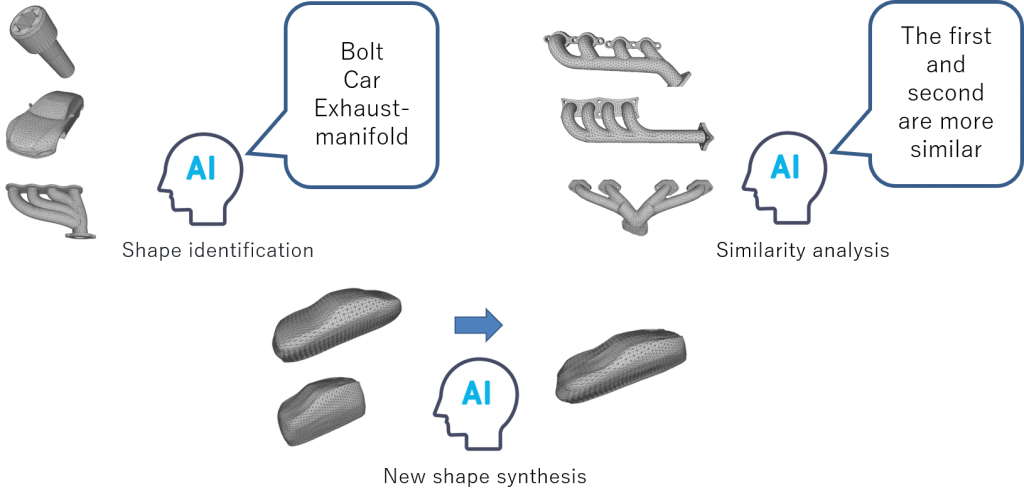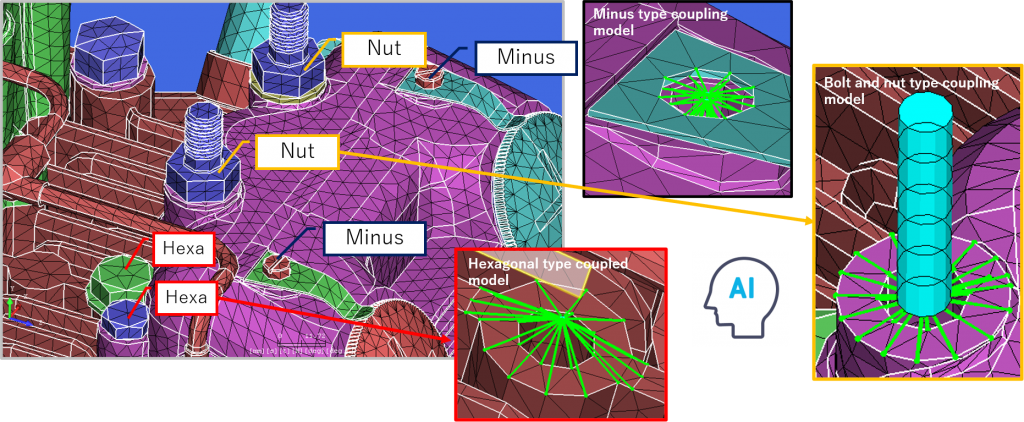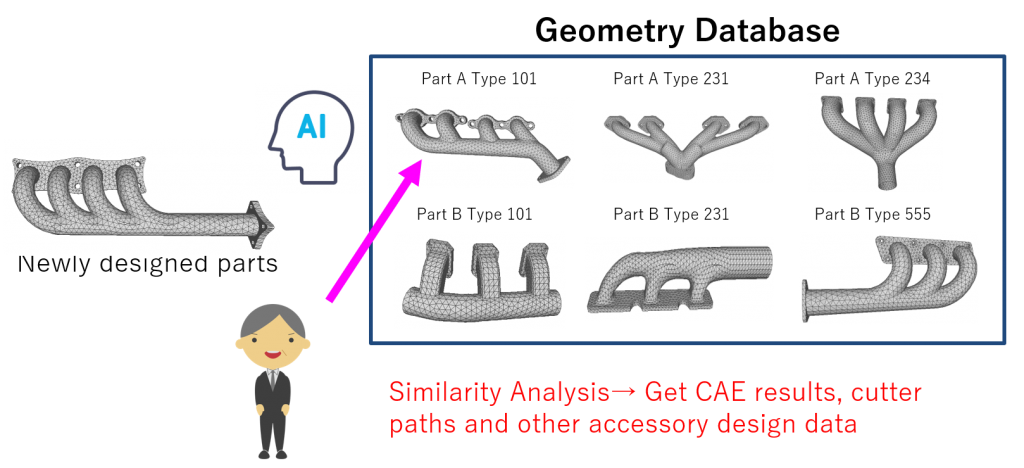Visit the 3D shape recognition technology demo page.
3D CAD systems are widely used in manufacturing industries such as automotive and electrical/electronics, and design data is stored in databases as 3D shapes.
In addition, important information such as CAE analysis simulation data and research necessary for product performance and quality control, and mold manufacturing cutter path data necessary for the manufacturing process are also converted to 3D and stored together with the geometry data.
On the other hand, deep learning technology, a branch of AI, has made great strides in various fields such as image recognition, translation, and medical diagnosis, beginning with the University of Toronto’s 2012 victory at the ILSVRC, an international image recognition competition. Nowadays, deep learning technology has established an unshakable reputation as a key science and technology that can influence the power of a country, and industry and academia are competing with each other to develop it.

Image recognition is one of the areas where deep learning technology is particularly being researched and developed.
An image is composed of two-dimensional pixel mapping, and the amount of data is equal to the number of pixels multiplied by the vertical and horizontal resolutions, and in the case of color images, the number of color information expressed in RGB is multiplied as well. For example, a 1024 x 768 color image is 2,359,296.
Since this size of data is too large to be trained by a neural network, it is necessary to reduce the data to an appropriate size that can be trained in a way that preserves as many features of the image as possible. Therefore, Convolutional Neural Networks (CNN) are heavily used in AI models for image recognition with deep learning techniques.
Computation using neural networks is difficult unless CNN’s convolutional and pooling processes are used to compress the data while successfully obtaining spatial and temporal dependencies in the image.

As explained earlier, manufacturing design data is already 3D and stored as 3D CAD and CT scanned geometry data. The most common data formats are Nurbs (curved surfaces), polygon meshes (triangles), point clouds, and voxel grids (cubes), but as with images, they are all too much data to be handled by a neural network, and must be compressed in some way. It requires the same convolutional techniques as the image.

The CNN for 2D images uses a two-dimensional array of image pixels. Since the arrangement of image pixels is fixed, the image pixels can be convolved and pooled with filters of a fixed shape and size.
On the other hand, taking the example of polygon meshes, a format for 3D shape data, the number of element edges connected to nodes is generally not fixed, so a fixed filter cannot be used as in images. For voxel meshes of another format, the structure is fixed and regular in 3D space, but the shape data is also inside the solid, and the amount of data is huge.
The challenge is how to overcome the problem of convolution of 3D shape data, which has a fundamentally different data structure from 2D images.

Based on the latest CNN research results, Astraea software has succeeded in convolution of 3D shape data. The target 3D geometry data is STL format or OBJ format, which is a representation format with triangular facets commonly used in 3D CAD. Mesh data of triangles and squares, which are widely used in CAE analysis data, can also be used in the same format.

If an AI model can recognize 3D shapes, it can be applied to shape identification, similarity determination, and new shape synthesis in the design process in the manufacturing industry.
Shape identification is the process of classifying an input 3D shape into predefined classes, such as a hexagonal bolt, flat head, or hexagon socket bolt, based on the shape of the bolt head. This is done by training with supervised data.
The similarity analysis searches the database for shapes that are similar to the input geometry.
In order to extract features of the shape and compare them with those of existing shapes in the database, generative models such as VAE (Variational Autoencoder) and GAN (Generative Adversarial Networks) are used to extract the appropriate features.
New shape synthesis automatically generates new shapes by blending feature vectors extracted from properly trained AI models as well as similarity analysis, for multiple shapes. For example, a new body model can be generated by successfully blending the tastes of multiple existing bodies.

With Shape identification, for example, when creating a mesh model for CAE analysis, it is possible to identify bolt shapes in the CAD model and automatically insert a joint model according to that bolt type.

With Similarity analysis, it is possible to search the database for existing similar geometries for new design geometries and obtain design data, such as CAE analysis simulation results and cutter path information during die creation.

With New shape synthesis, features from existing product models can be blended to automatically synthesize new product shapes.

If you have any questions about the research and development of the Astraea software, please feel free to contact us through the Contact Us page.